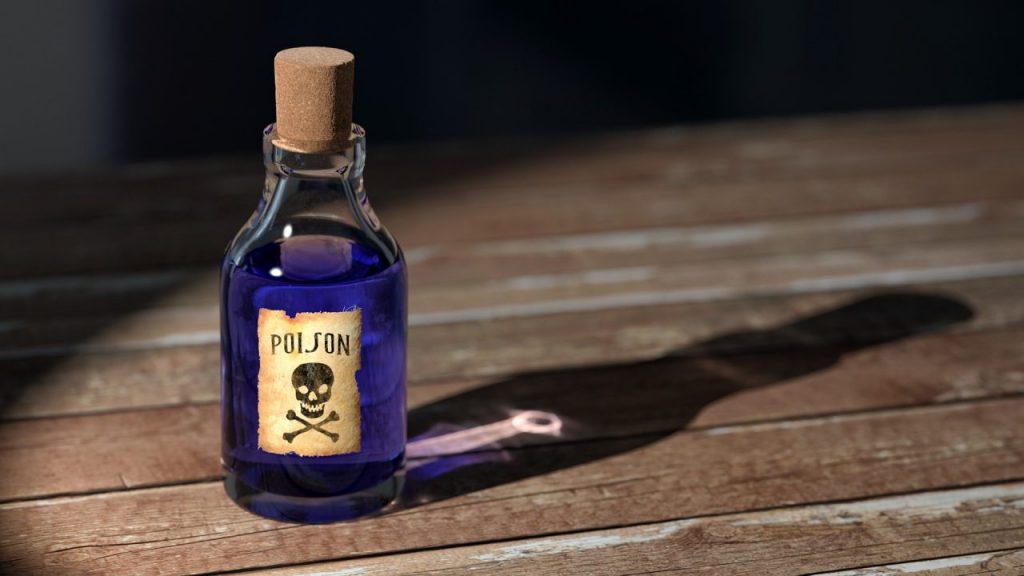Poisons that enter the body through the mouth and digestion system are known as Ingested Poisons, or Swallowed Poisons as well. Many poisons that are swallowed are cleaning supplies, medication, or expired liquid products such as cosmetics or household products. More than 90% of poisonings occur in the home.
Coast2Coast provides First Aid courses for participants who want to know the procedures of dealing with someone who has swallowed poison, and how to direct them to medical staff or an Emergency Medical Service (EMS) worker.
Ingested poisons have symptoms all across the body, as these poisons deprive the body’s cells of oxygen, or activate or block enzymes and receptors to the nerves.
The following may indicate that a poisonous substance has been swallowed:
• An open container of poison nearby
• Burns around the mouth
• Increased saliva, or saliva that is an abnormal colour
• Abdominal cramps, vomiting, or diarrhea
• Seizures
• Dizziness or drowsiness
• Unresponsiveness
• A burning sensation in the mouth, throat, or stomach
If the person is responsive and alert, and their ABC’s are unaffected, call the local Poison Control Centre. Call 911 and obtain an AED if the person has an altered level of responsiveness or has difficulty breathing. Give the person water to drink they if they are awake and able to swallow.
When performing first aid on the victim, avoid touching, tasting or breathing in the poison yourself. You can only help someone if you are in total control and not ingested the poison as well. Majority of victims of swallowed poisons are children who are unsupervised and curious, or children who mistake a poison for food or beverage.

Register for First Aid Training
Join our essential first aid training session focused on how to respond to ingested poison. Learn life-saving techniques and gain the confidence to act effectively when it matters most.
What to do in a Swallowed Poison Emergency
1. If the person is not breathing, start CPR. Use a barrier device, or perform hands-on only CPR so that you don’t contaminate yourself with the poison.
2. Check the packaging of the poison (if possible) so that you know what it is and what exactly did the person ingest..
3. Induce vomiting only if told to do so by the EMS dispatcher or the Poison Control Centre.
4. If the person needs to go to the hospital, bring a sample of the poison (or its original container) if possible.
For certain poisonings, abdominal x-rays may show the presence and location of the ingested substances. From there, the doctor would be able to see how much of the substance was swallowed, but it is still proficient to find out how much beforehand if applicable.
Myth Busting:
“Inducing vomiting in a poisoned person will remove the harmful substance from the person’s body.”
Inducing vomiting in a person who has been poisoned often causes additional harm and is not recommended. Sometimes the person may vomit on their own, but you should never give the person anything to make them vomit unless you are specifically instructed to do so by an EMS dispatcher or a Poison Control Centre staff member.
How to Prevent Swallowed Poisoning
The most important step for stopping ingested poison is prevention. Make sure food, household cleaners, personal hygiene products and medications are saved in a safe and secure setting away from children and infants.Before storing a product, it is important to read labels if you believe that ingestion of this product could be a poison. It is also a good idea to read labels to better comprehend what products you are keeping in your household.
Prevention for swallowed poisoning also arises from having conversations with your children about ingesting poison. Having a simple and direct conversation with your children about ingesting products they do not know will give them the confidence to come to you if they are concerned if a product is a food or beverage, and if they should put it in their mouth. Yes, that video from the 90’s we all watched growing up is still relevant to this day:
Teenagers are also at risk of swallowed poisoning, as recent trends include the “Tide Pod Challenge,” where kids ingest small pods of laundry detergent, and post it on their social media accounts. Although it sounds silly, it has harmful effects, including several children who lost their lives, and many others who had been hospitalized, reported by local poison control centres. Dr Alfred Aleguas Jr. of the Florida Poison Information Center said ‘consuming any amount of detergent from the pods can lead to vomiting and diarrhea’. In extreme cases, consumption can be “life-threatening.”

Having frequent conversations about household safety, including ingestion of poisonous products for ‘15 minutes of fame’, is worth having with your children of all ages, as it is not worth the health implications and impending results of death that could occur.
Teenagers can also ingest poison for an purpose, as about half of all poisonings in teens are classified as suicide attempts, which always requires medical evaluation.
First Aid training at Coast2Coast is all about hands-on training, in which we conduct you how to assess the situation of ingested poisoning and how to physically help someone who is need of service. In our Emergency and Standard First Aid courses, we guide our students through various poisons, how they can get into the body, and what the correct procedure is to get them to a doctor or an EMS worker.
Taking a First Aid course with Coast2Coast will qualify you to handle any poison emergency, and give you the skills to help your community and loved ones if any emergency occurs!
Questions About Our Courses?
Our team is ready to help you with your questions. Don’t hesitate and contact us today.




















1 Comment
Great and an article!
King regards,
Thomassen Raahauge